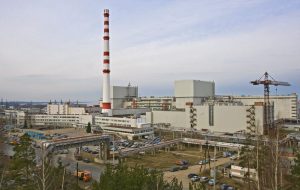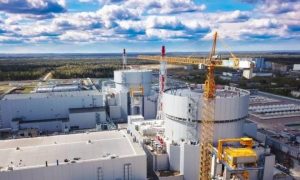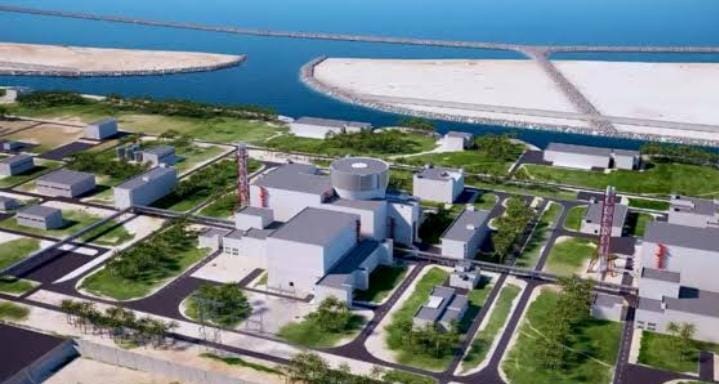In today’s world there are constant and diligent efforts to develop means of electric power generation. To meet the ever-increasing demand, global electricity production increased at an average of 2.5% per year between 2010 and 2020 (IEA, 2021). What the world expects from the energy industry is not only increasing the electric power generated perse, but also producing electricity through cleaner, safer, more sustainable, and more economic processes. Today Nuclear Energy is one of the sustainable power generation options answering to this demand.

As per official statistics there are more than 400 nuclear reactors worldwide, providing about 10% of the world’s electricity. Russia currently takes the lead in constructing new nuclear power plants abroad, with Rosatom ranking first in terms of the number of ongoing projects for nuclear power plants construction.
Nuclear power plants based on Russian-designed reactors boast a high level of safety due to several factors. Among them the self-protection principle and the presence of multiple safety barriers. Modern Russian nuclear power units utilize combination of active safety systems, which require human intervention and a power supply, and passive safety systems, which do not require operator intervention or a power source. One of the example of passive safety systems is a core catcher.
It is part of most advanced nuclear power units with VVER-1200 reactors of generation III+. It is a unique know-how of Russian nuclear experts which ensures the safety of the environment and the people in any scenarios of the NPP operation. The core catcher is a container in the shape of a steel cone which, in case of an emergency, securely retains the fragments of the molten core and prevents their discharge beyond the reactor building containment. During the NPP operation, the core catcher is filled with special materials; when interacting with them, the core loses part of its accumulated heat.

Additionally, a safety culture is maintained at all stages of the life cycle of the plants, from site selection to decommissioning.
VVER reactors employ a core design that ensures the reactor’s self-protection or self-regulation. If the neutron flux increases, the reactor temperature and steam content rise. This effect, known as the negative “coefficient” of reactivity, can be counteracted by absorbing the emitted neutrons. An absorber, usually boron carbide, is used for this purpose. Absorber rods are inserted into the core to absorb the neutron flux, slow down the reaction, and stop it effectively.
Russian nuclear power plants predominantly use two-circuit schemes, allowing heat removal without relying on external water sources. This two-circuit design is fundamentally safer than the single-circuit scheme used in Japan because all radioactive components remain inside the containment, and there is no steam in the primary loop, significantly reducing the risk of fuel exposure and overheating.
The safety system of modern Russian nuclear power plants consists of four barriers to prevent the spread of ionizing radiation and radioactive substances into the environment. The first barrier is the fuel matrix, which prevents the release of fission products under the fuel element cladding. The second is the fuel element’s shell, preventing fission products from entering the coolant of the main circulation circuit. The third is the main circulation circuit itself, which prevents the release of fission products under the protective hermetic shell. Finally, the fourth barrier is a system of protective sealed shells (containment), which ensures the exclusion of fission products from the environment. In the event of an incident in the reactor hall, all radioactivity will remain contained within this shell.
All modern Russian VVER-type nuclear reactors are equipped with containment structures designed not only to withstand external influences such as plane crashes, tornadoes, hurricanes, or explosions but also internal pressure. The containment can withstand an internal pressure and external impact from a shock wave, tsunamis, floods, and event can withstand the impact of an aircraft.
Safety is considered a top priority by Rosatom, and its safety policy is designed to mitigate nuclear risks and industrial hazards while protecting local communities and the environment throughout the lifecycle of nuclear facilities.
Rosatom ensures accident-free operation through licensed and supervised design, construction, and maintenance activities conducted by itself and its subcontractors. Regular inspections are carried out by Rosatom to maintain the highest level of safety at nuclear fuel plants and hazardous facilities. Additionally, the International Atomic Energy Agency (IAEA), established by the United Nations, plays a crucial role in auditing global nuclear safety.
It prescribes safety procedures and requires the reporting of even minor incidents. National nuclear safety inspectorates in every country operating nuclear power plants collaborate closely with the IAEA to ensure safety standards are upheld






Discussion about this post